The clothes maker: Ashiq Zaman Munna (Oporajeo)
I wasn’t in the building [Rana Plaza] when it collapsed but I was there to provide aid to people. We (my former colleagues and I) were even inside the building for six days and all we could do was bring out the dead bodies. We provided treatment and rehabilitated more than 50 people before starting Oporajeo, a manufacturing co-operative providing job opportunities for survivors.
Oporajeo means “invincible”; nobody can defeat us. When we started after the collapse of Rana Plaza we wanted to tell people that they can rise against the difficulties and recover their lives from the disaster.
We began as a cotton bag manufacturer but after some time we realised that they are not profitable, so we shifted our focus to jute products. After three of four months we launched a new segment to compete with the garment industry, making T-shirts and polo shirts.
We’re trying to establish a model for the garments industry. We give our workers more than the industry-standard salary, and we share all the profits with them. They get 50% of profits in cash and the other 50% is used for different purposes to benefit the workers; we have a school close to the factory, so 20% of the profits goes to educating the workers’ children. Most of the workers are still in trauma, so we provide medical support; counselling with psychologists and physiotherapy sessions. The rest is for future factory expansion, and workers can take a short loan from that amount. It’s a completely worker-owned factory.
Along with that, we are educating workers and trying to improve their living standards. We organise discussions with our staff about about workers’ rights and try to advise them on how to manage their lives on their salaries.
We are facing problems though. We’re being ignored by big brands. Small factories like Oporajeo are making good clothes and giving workers a better wage so we have to increase our prices for profits. But brands aren’t going to buy from us, as the alternatives are much cheaper. Previously we had 40 workers, but due to financial difficulties we were forced to downsize our factory to between 15 and 20 workers. It’s not only about Bangladesh. All over the world the same stories are happening.
Most people don’t really care where their clothes are coming from, or who makes them. Consumers just like cheap clothes. But until they are aware of the working standards in places like Bangladesh, push big brands to pay more to the manufacturer, and say: “You have to pay your workers a better wage,” things are not going to change.
We’re trying to establish an egalitarian and sustainable garments industry but we’re too small to make a difference ourselves. It’s only when big brands come to the scenario that change will happen. I’m not blaming the consumer – it’s the cycle that’s ugly, but you should at least be aware of what you are buying. Interview by Katherine Purvis
The hops grower: Ali Capper (Stocks Farm)
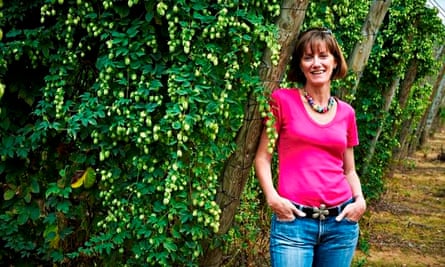
Unfortunately, British hop growers have had a seriously hard time over the past 100 years. In the 1880s there were more than 30,000 acres of hops in Britain. These days there are barely 2,000 acres. There are several reasons why. Traditionally, hops were used as a preservative, so when it was discovered that beer could be pasteurised instead, the amount of hops used in beer dropped hugely. But the biggest factor in the decline of British hops was the trend for un-hoppy lagers in the 1970s.
I used to work in London as a marketing executive but then fell in love with a hop farmer and my life changed forever. I left the big smoke to live on a farm in Worcestershire and became obsessed with beer. Hops are a real labour of love. They’re very difficult to grow and extremely labour-intensive. What’s more, you have to keep a very close eye on them because even the smallest number of pests can decimate an entire crop. But when you have a good harvest, nothing beats it.
In Britain we’ve got a beautiful maritime climate with even rainfall throughout the year and our soil is amazing quality. It’s this unique environment that makes our hops so delicious. Unlike New World hops, which tend to be overpowering, British hops are subtle, delicate and extremely complex.
British hops are making a comeback, particularly in America where people are tired of extremely bitter, in-your-face beers. As a result, there’s a movement back towards more refreshing, British-style session beers, which is great news for us.
I really hope that beer lovers will reacquaint themselves with all the delicious domestically grown hops our island has to offer, and that when they are down their local they can appreciate all the hard work that goes into planting, growing and harvesting the ingredients found in their favourite pint. Interview by Daniel Tapper
The Fairtrade cocoa farmer: Joseph Asa-Ofori
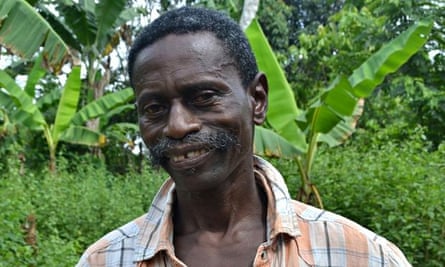
Our premium cocoa beans from Ghana go to London, New York and China. Cocoa cultivation and exports, mainly produced on smallholder farms, have long been an important part of our country’s economy, currently making up about 15% of GDP.
But the economic returns for farmers are small and the work is drudgerous. More possibilities are available now in this fast-developing country. It means the youth are laying down the machete, picking up a smartphone and leaving agriculture for the hope of a better life in the cities.
When I was young I studied physiology, biochemistry and even worked in a car paint shop in Germany for a while. But I came back. I saw that I could help revamp my grandfather’s cocoa farm in Kokoteasua, in eastern Ghana. The farm needed a complete resuscitation, cutting down old trees and replanting. That is tedious work, and where is the finance? But however, I did it.
Now when I take a stroll around my land, I feel satisfied. If you are a conscientious farmer, your relationship with your cocoa trees is very intimate. When you tread through your farm, every tree calls you. Some of them tell you, “chop me off!”, others say, “no, keep me, I will bear pods for you next time”. Sometimes I keep working throughout the twilight, wandering further away and suddenly find myself having to grope through the darkness back to my village because the trees have been calling me: “Cut me off, chop me there.”
The trees create a canopy so you don’t feel the full force of the African sunshine. But you have these insects; as soon as you raise your eyelids they come straight into your eyes. And they want to enter into your ears as well.
I am the chief farmer in the village. Last year we produced 36 tonnes of Fairtrade beans and we used some of the premiums for basic health insurance for the whole village. The rest we divided proportionally among ourselves; my ramshackle house built of mud desperately needs a new roof.
Gradually, with our premiums, we can do more to improve our lots. Of late we have made our own chocolate using the groundnut mill, and you can also make gin and soap from the cocoa pod. Those who wish to go to town, if they see that there is a sustainable local industry, using cocoa and cocoa by-products, I think it will make them remain. Interview by Maria Evrenos
The fisherman: Paul Joy, (Hastings Fish)
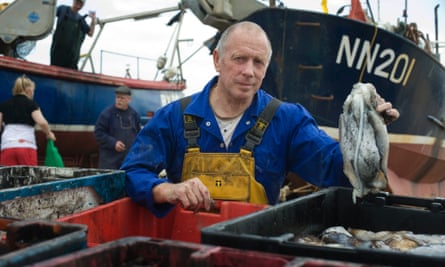
There are a lot of misconceptions about fishermen and I’d go as far as saying that the general public have a low opinion of them. This is probably down to all the publicity surrounding discards and overfishing.
But we’re not all to blame. In Hastings we have really healthy fish stocks and this is all down to sustainable fishing practices. Because we’re only a very small, artisanal fleet we catch limited amounts of fish. We also fish selectively, which means we go out of our way to avoid catching juveniles. If we do end up with bi-catch, we land it and sell it at the market, so nothing goes to waste. Finally, because we only fish locally we have a low carbon footprint.
Why is sustainable fishing important to me? Put quite simply: my family have been fishing here for more than 1,000 years. If I were to start fishing irresponsibly now there would be no work for generations to come. I’m not just a fisherman, I see myself as a custodian of the sea and it is my job to safeguard its future.
Fishing is something my family has always done. There are even records of long lost relatives landing fish in the Domesday Book. I initially tried to break the lineage by studying horticulture and becoming a landscape gardener. But inevitably I was drawn back to fishing and I’ve now been doing it for more than 40 years. It must be in my DNA.
Most fishermen pour their hearts and souls into their jobs – we care just as much about the ocean as anybody else. I really hope people know that when they’re tucking into a fish pie. Interview by Daniel Tapper
The forester: Nick Short, Yorkshire forest district
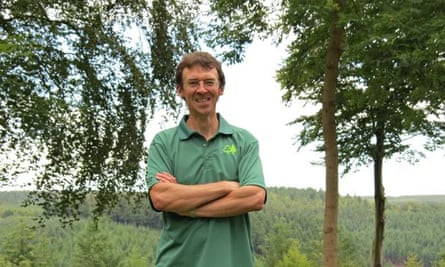
Nowadays, much of the felling work in forests is done by contractors and machinery. A large harvesting machine can fell and process a tree in about five minutes. We produce between 25,000-30,000 cubic metres of timber a year from our part of the district. The top-quality wood is sold to sawmills for furniture and construction, middle-grade wood is made into fencing and pallets, and the lower-grade wood is sold for fuel. It’s the sale of timber that keeps the forests going.
I manage about 4,000 hectares of public forest in Yorkshire. I’m responsible for maintaining public access, ancient woodland restoration and producing timber for market. Essentially, I take the long-term strategic plan for the forests, and convert it into a working plan on the ground.
I always wanted a practical job. I wanted to be out in the countryside so I decided to study forestry at university. Before graduating, I spent several summers felling spruce in the Scottish Borders. It was exhausting work. We would select and hand fell a tree with a chainsaw, remove the branches, cross-cut the length of timber and stack the logs by hand. For that, we’d get about 20p a piece.
Our forests are a finite resource and a large part of my job is to plan for a sustainable future, taking into consideration climate change and pest and disease control. We only have a handful of traditional species left, so we are looking into planting alternative species – for example redwoods and hemlock from North America. Around 25-30% of the estate across the district is continuous cover, which means we don’t clear-fell entire areas of woodland – there’s always a canopy of trees. As a result, the forests are becoming more diverse, which gives them greater resilience to climate change.
I have conservation objectives as well. The bulk of the ancient woodland in the district is on my patch and I am involved in gradually restoring that to a semi-natural habitat, retaining the ground flora and the woodland conditions that a lot of native woodland species rely upon. In one of our woods, we have around 500 veteran oak trees, which date from the time of the dissolution of the monasteries. Our conservation work involves carefully thinning a halo around each tree from the surrounding conifer woodland without disturbing their unique microclimate; otherwise they can go into shock. The aim is to slowly restore a more natural and native habitat around these trees.
I’m not sure people are necessarily aware of the work a forester does, but I am pleased to see people using the forest much more than they used to – there’s definitely a higher level of awareness and enjoyment. I enjoy the woods tremendously. It’s what keeps me going in the job, getting out and about and seeing that the decisions I make are slowly shaping the forests of the future. Interview by Nell Card
The organic farmer: Rosemary Wass, New Field Organics
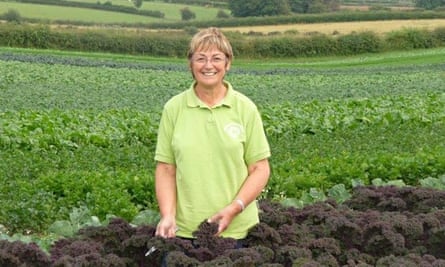
I think there’s a huge disconnect between your average supermarket shopper and the farmer. We’ve had people ask for white carrots before, when what they meant were parsnips. And you’d be surprised at how many people won’t buy a vegetable because it has soil on it. In reality, a dusting of soil helps veg to stay fresher for longer. I’m proud that everything we sell is as it was found in the field: muddy, knobbly but full of flavour.
My husband and I started farming on the cusp of the North York Moors more than 45 years ago. Amazingly, the farm I live and work on is where my husband was born and lived until he died in 2007.
We decided to go organic in 1986. Back then people thought we were absolutely mad and just laughed at us. I honestly think they thought we’d gone crazy. But we went ahead and did it anyway because we felt like it was the ethical thing to do.
The first thing we tried to grow was organic vegetables. Nobody thought it was possible because the farm is 650ft above sea level, making it one of the highest organic farms in the country. But we succeeded despite the harsh weather and today we grow seasonal vegetables, as well as wheat, oat and barley. We’ve also got a herd of organically reared beef cattle, so we’re virtually self-sufficient.
Organic farming is important to me because is ensures that all the produce we sell is completely natural and is grown in co-operation with nature. This means the land is improving all the time. And it’s not just good for nature; we’re providing good nutritional food for lots of people. While support for organic food has definitely grown, there is still some way to go. Interview by Daniel Tapper
Interested in finding out more about how you can live better? Take a look at this month’s Live Better challenge here.
The Live Better Challenge is funded by Unilever; its focus is sustainable living. All content is editorially independent except for pieces labelled advertisement feature. Find out more here.
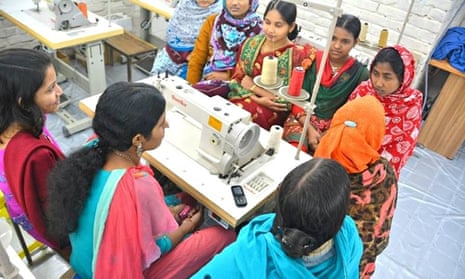
Comments (…)
Sign in or create your Guardian account to join the discussion